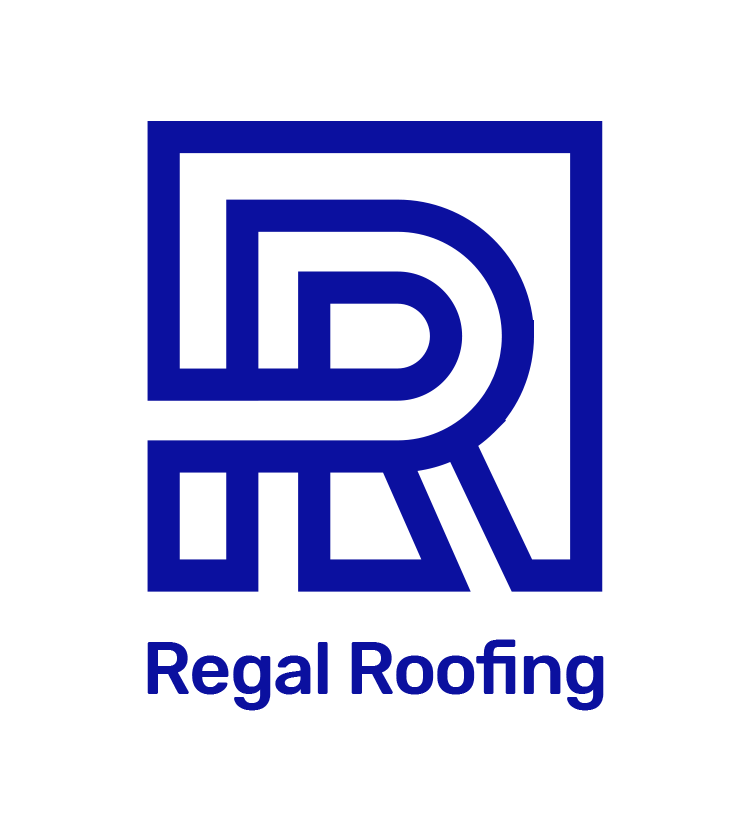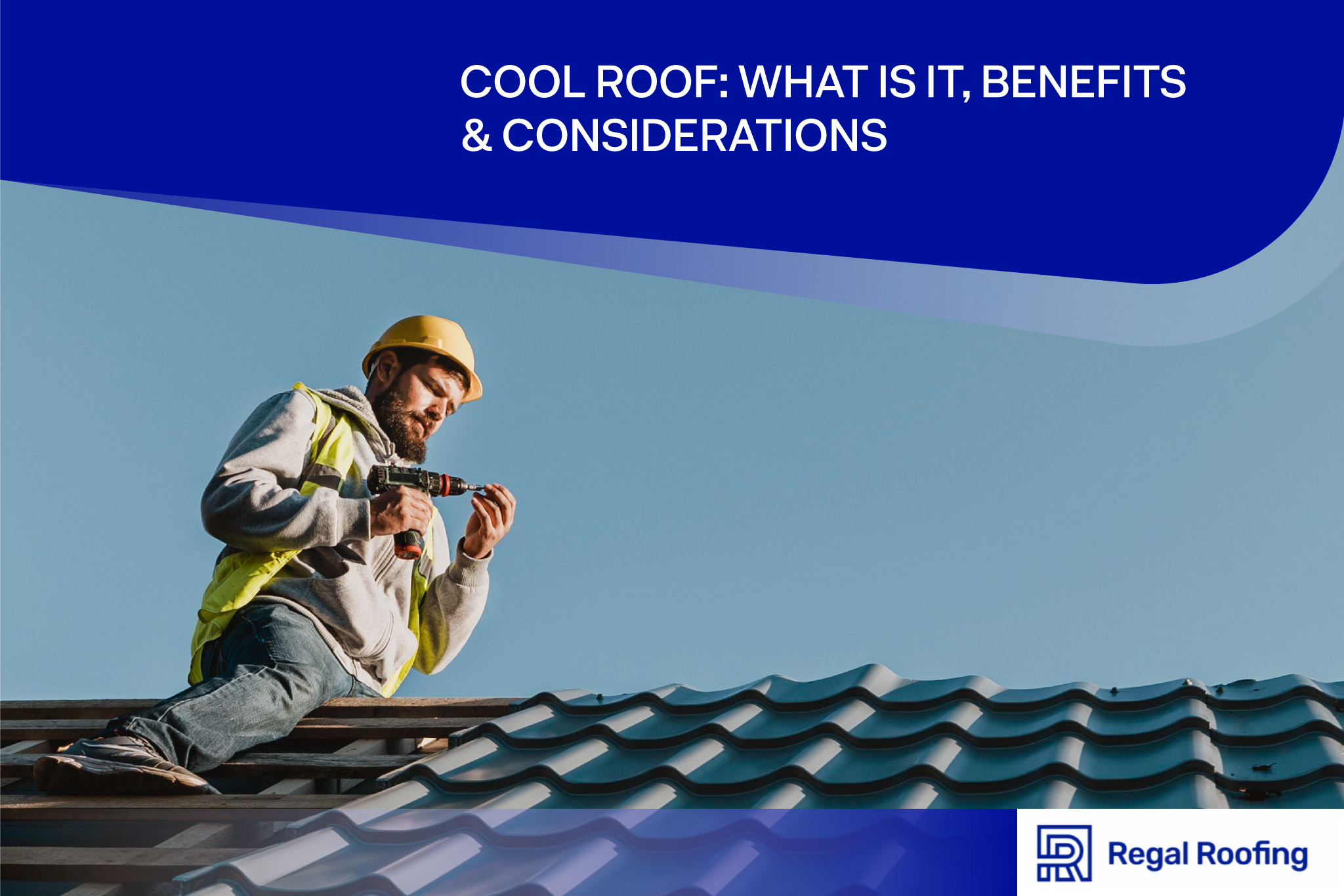As modern homeowners become increasingly environmentally conscious and search for energy-saving solutions, the concept of a “cool roof” has gained significant traction. Regal Roofing is here to guide you through this innovative roofing solution, which offers a blend of benefits for both your home and the planet.
What is a Cool Roof?
A cool roof is designed specifically to reflect more sunlight and absorb less heat than a standard roof. Whether you’re renovating or building anew, considering a cool roof can be a game-changer, especially in sun-drenched climates.
How Does A Cool Roofing System Work?
Harnessing the principle of reflection, a cool roof uses special materials that prevent excessive heat absorption. Through high reflectivity and improved emissivity, cool roofing ensures your home remains comfortable while reducing energy demands. Moreover, a cool roof is just one component of an energy-efficient roofing system, offering more holistic advantages for homeowners.
Benefits of Cool Roofs
The numerous benefits of cool roofs can lead to significant long-term savings and enhanced living conditions. From financial savings to environmental impact, here’s what a cool roof brings to the table:
-
Energy Savings
Cool roofs significantly reduce the need for air conditioning, promoting energy conservation and helping to curb those escalating energy bills.
-
Extended Roof Lifespan
By decreasing thermal fluctuations, cool roofs experience less wear and tear, leading to an extended lifespan.
-
Environmental Impact
Reduce your carbon footprint with a cool roof, which minimizes greenhouse gas emissions.
-
Increased Comfort
Say goodbye to overheated living spaces, as cool roofing ensures a consistently comfortable indoor environment.
-
Improved Air Quality
With reduced energy consumption comes decreased emissions from power plants, leading to cleaner air.
-
Financial Savings
Over time, energy savings translate into substantial financial benefits, making cool roofs a sound investment.
Cool Roofing Considerations
Before you embark on your cool roofing journey, there are vital factors to consider:
-
Roofing Materials
Options range from reflective tiles to roof coatings that can transform existing roofs. Dive deeper into the various roof coatings available.
-
Roof Color
Lighter colors generally reflect sunlight more efficiently, promoting the cool roof effect.
-
Roof Slope
The slope can influence reflection and energy savings. Understanding the dynamics is crucial.
-
Climate and Sun Exposure
Cool roofs are particularly beneficial in sun-intense areas. Assess your location’s sun exposure before deciding.
-
Roof Insulation
Pair your cool roof with robust insulation for maximum energy savings.
-
Building Codes and Regulations
Ensure your roofing choice aligns with local regulations.
-
Professional Installation
Trust only the best. Always contact a roofer for professional guidance and installation.
-
Maintenance
Regular upkeep, like cleaning and inspections, can maximize the efficiency and lifespan of your cool roof.
-
Cool Roof Costs
While initial costs might be higher than traditional roofs, the long-term energy savings and extended lifespan can lead to a positive return on investment.
Cool Roofs vs. Green Roofs
While both options prioritize sustainability, green roofs incorporate vegetation, providing different benefits and considerations than cool roofing. Green roofs act as insulators, reducing the amount of heat that penetrates a building, leading to more consistent indoor temperatures. On the other hand, cool roofs reflect sunlight and absorb less heat, offering energy savings especially during hot months. Both roofing options contribute to decreasing the urban heat island effect, making cities more livable.
Cool Roofs vs. Solar Panels
Solar panels generate electricity, while cool roofs primarily reduce energy consumption. Combining both can be an energy-efficient powerhouse. While solar panels actively harness the sun’s energy to power your home, cool roofs passively ensure your home uses less energy by reducing heat absorption. By incorporating both, homeowners can not only generate their own electricity but also significantly reduce their energy needs, leading to substantial savings.
Cool Roofing As A Solution For Hot Climate
In hot climates, cool roofing is a no-brainer. The significant reduction in indoor temperatures can transform living conditions and energy demands. With the sun beating down, traditional roofs can become incredibly hot, making air conditioning systems work harder and increasing energy bills. Cool roofing, by reflecting more sunlight and absorbing less heat, mitigates this issue, resulting in more manageable indoor temperatures and decreased energy costs.
Are Cool Roof Shingles Worth It?
Certainly! Investing in cool roof shingles is a decision that pays off in the long run. These shingles, imbued with cool roofing technology, reflect more sunlight and absorb less heat compared to traditional shingles. As a result, homeowners can anticipate significant energy savings, a more comfortable living environment, and a potential extension of the roof’s lifespan. When balancing the initial investment with the long-term benefits, it becomes evident that cool roof shingles are not just a worthwhile choice but a smart one. Furthermore, when considering choosing a shingle roof, integrating cool roofing technology amplifies its advantages.
Your Next Step with Cool Roofs
As energy costs rise, it’s time to consider smart, sustainable solutions like cool roofs. With a multitude of benefits, from improving home comfort to contributing to a greener planet, cool roofing is an investment that pays off. Consult with Regal Roofing for professional advice and installation services tailored to your needs.
Cool Roofs FAQs
Initial costs might be higher, but long-term savings make them worth the investment.
Temporarily, but it’s not a sustainable or effective long-term solution.
Yes, by improving ventilation and reducing attic heat.
Absolutely, they play a pivotal role in maintaining attic temperatures.
With proper maintenance, a cool roof can exceed the lifespan of traditional roofs.


